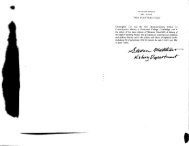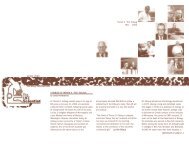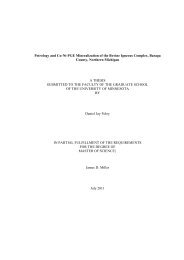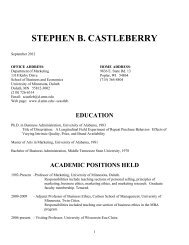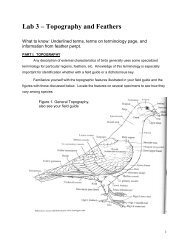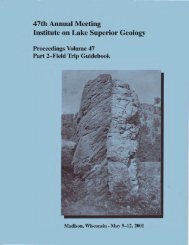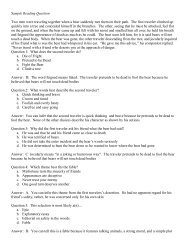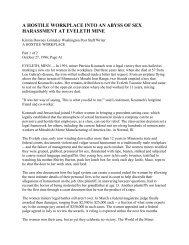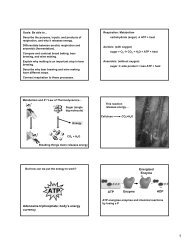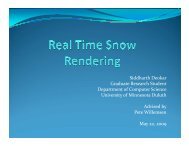Program, Abstracts, and Guidebooks - University of Minnesota Duluth
Program, Abstracts, and Guidebooks - University of Minnesota Duluth
Program, Abstracts, and Guidebooks - University of Minnesota Duluth
Create successful ePaper yourself
Turn your PDF publications into a flip-book with our unique Google optimized e-Paper software.
-25--<br />
ROOT SEVERANCE AND TECTONIC TRANSPORT OF OREBODIES<br />
IN METAVOLCANIC HOST ROCKS<br />
WILLIAM F. JENKS<br />
<strong>University</strong> <strong>of</strong> Cincinnati<br />
ABSTRACT<br />
Association <strong>of</strong> lenticular, concordant, semi—concordant, <strong>and</strong><br />
cross—cutting massive sulfide bodies with mafic <strong>and</strong> felsic volcanic<br />
sequences is well known. Some are clearly <strong>of</strong> submarine exhalative<br />
or replacement origin. Others may well be related to subaerial<br />
volcanism, but near sea level in a zone <strong>of</strong> negative crustal movement,<br />
since preservation <strong>of</strong> near surface phenomena in a eugeosynclinal<br />
environment requires relatively rapid covering <strong>and</strong> burial. Meta—<br />
volcanic sequences originating in active <strong>and</strong> subsiding tectonic belts<br />
have been subjected to all postvolcanic events affecting the<br />
enclosing metasedimentary rocks; they may have undergone deformation<br />
by overthrust faulting, nappe folding, <strong>and</strong> refolding. Separation<br />
<strong>of</strong> the volcanic pile (<strong>and</strong> associated ores) from its roots during<br />
such deformation would be expected. These structures, in meta—<br />
volcanic terranes, can go unrecognized because <strong>of</strong> originally complex<br />
volcanic—stratigraphic relations, transposition by sliding, md<br />
deep folding <strong>and</strong> metamorphism.<br />
Tectonic severance appears to be the reason for the absence <strong>of</strong><br />
obvious plutonic source rocks in many metavolcanic sequences <strong>and</strong><br />
their ores. Separation <strong>of</strong> ores from roots may be more than 50 1cm<br />
if we take Alpine deformation as a model. Certain types <strong>of</strong><br />
volcanic masses such as rhyolite domes would yield to tectonic<br />
transport in a manner controlled by local contrasts in ductility,<br />
shape, <strong>and</strong> size., The deformational style is quite unlike that<br />
produced in regularly layered rocks. Orebodies, with their normal<br />
envelopes <strong>of</strong> hydrothermal alteration, may 'be transported in an<br />
environment especially susceptible to structural irregularity<br />
because they are in ductile shells adjacent to irregular volcanic<br />
masses. Resultant structural details would be expected to be<br />
still more complicated by selective flowage <strong>of</strong> some sulfide minerals<br />
<strong>and</strong> by migration in response to new chemical gradients.




